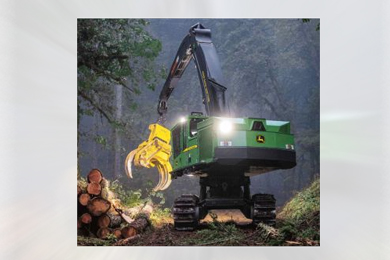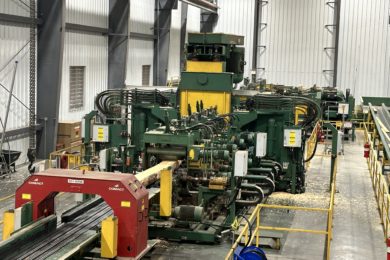The advancement of forestry equipment has typically focused on generating more powerful machines. Now, John Deere has launched a new tech-driven initiative that will marry strength with intelligence.
Through the Precision Forestry initiative, Deere will reorganize its technology portfolio and increase its efforts in delivering solutions designed to increase efficiency and productivity in the woods.
“It’s not about getting bigger and stronger in the woods all the time,” said Graham Hinch, Deere’s sales and marketing director for the western hemisphere. “It’s about delivering more intelligent, connected machines that address our customers’ needs.”
Smart Industrial
The forestry tech initiative aligns with Deere’s overarching Smart Industrial operating model. The operating model, announced last summer, aims to accelerate its success via the integration of smart technology innovation with its legacy of manufacturing.
Precision Forestry is a more descriptive term for what customers can expect from the John Deere technology suite, including real-time, map-based production planning and tracking capabilities, along with new and evolving operator assistance capabilities.
“With technology, we believe that loggers need to embrace working smarter, not harder. The logging industry is built on hard work – it’s part of the industry’s DNA,” said Matthew Flood, product marketing manager for skidders and the Precision Forestry initiative at John Deere.
“We want to complement that work ethic with machine intelligence and system-level integration, delivering the tools loggers need to increase efficiency and performance in the woods.”
Note: Matt Flood will be presenting to local harvesting contractors on some of these new JD Smart Technologies as part of the upcoming HarvestTECH 2021 event running in Rotorua, New Zealand on 13-14 April.
A game changer
Flood explained technology is a game changer for the forestry industry. While forestry machines have become more powerful, there remains a 40 per cent variation in productivity on Deere’s machines.
“That variation comes specifically from the operator sitting in the seat. It comes from their experience level and the efficiency they have to offer on that machine,” Flood said. “We need to start to focus on having our machines easier to operate, and really allow an inexperienced operator to get the same productivity out of that machine as an expert operator.”
Machines will evolve to become smarter, and capable of adapting to various situations, regardless of who is seated in the cab. “We look to have machines that provide feedback and guide operators. Potentially, someday, they can prevent operators from making a poor decision,” Flood said.
As well, Precision Forestry will see an era where more accurate data can be harvested from machines. “As we have this accurate information and data, we can look at our machines as a system, rather than just individual machines and individual machine efficiencies,” Flood said.
Photo: Tracked Harvester 959MH Harvesting Heads FL100




